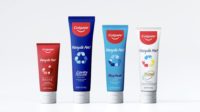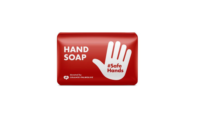Colgate-Palmolive to Share Recycled Tube Packaging Technology

Colgate delivered to retailers the first tube recognized by the Association of Plastic Recyclers (APR): Antiplaque & Whitening toothpaste under the company’s Tom’s of Maine brand. Tom’s will complete the switch in 2020, when the Colgate brand will start the transition in Europe and North America. As well, the Company will complete needed modifications to tube-making equipment at more than a dozen of its facilities around the world by 2025.
Now, Colgate is sharing its innovative technology with competitors as part of its campaign to transform one of the most widely used forms of plastic packaging that until now could not be recycled. “Colgate wants to make tubes a part of the circular economy by keeping this plastic productive and eliminating waste,” said Noel Wallace, chief executive officer and president of Colgate-Palmolive.
“If we can standardize recyclable tubes among all companies, we all win. We want all toothpaste tubes -- and eventually all kinds of tubes -- to meet the same third-party recycling standards that we’ve achieved. We can align on these common standards for tubes and still compete with what’s inside them.”
Most of today’s toothpaste tubes are made from sheets of plastic laminate – usually a combination of different plastics – often sandwiched around a thin layer of aluminum. The mix of materials makes it impossible to recycle through conventional methods.
To make its recyclable tube, Colgate chose high density polyethylene (HDPE), the “No. 2” plastic used to makecir milk jugs and other plastic bottles. Chosen because it is already widely recycled, HDPE had been thought to be too rigid to make a squeezable tube. Colgate engineers figured out how to combine different grades and thicknesses of HDPE laminate into a tube that meets recycling standards, protects the product and holds up to the demands of high-speed production, all while remaining comfortably squeezable.
To earn APR recognition, the Company also had to demonstrate that the tube material could be reused to make new plastic bottles and would successfully navigate the screens and conveyor belts used to sort recyclables. The tube -- from invention through APR recognition in June -- was developed over more than five years. The Company is currently seeking similar recognition from Plastic Recyclers Europe.
Looking for a reprint of this article?
From high-res PDFs to custom plaques, order your copy today!





